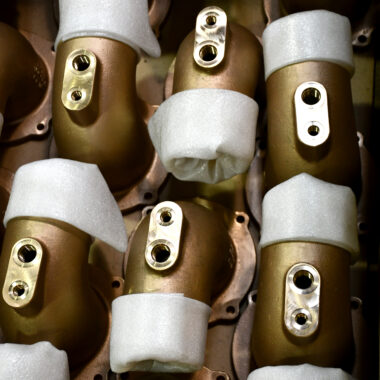About Aluminum Casting Chronicles: Strategies, Fads, and Tips
About Aluminum Casting Chronicles: Strategies, Fads, and Tips
Blog Article
Crafting Perfection: Just How to Achieve High-Quality Aluminum Castings Whenever
In the world of aluminum spreading, the search of excellence is a constant trip that requires a meticulous strategy and a keen understanding of the intricacies involved. Accomplishing regular top quality aluminum spreadings demands a detailed grasp of the processes, from choosing the appropriate alloy to implementing accurate mold and mildew designs and meticulously managing spreading specifications. The real mastery exists in the ability to carry out these elements flawlessly to create perfect castings every time. As we check out the intricacies of crafting perfection in light weight aluminum castings, discovering the crucial methods and strategies that bring about impressive outcomes comes to be extremely important for those making every effort for quality in this specific field.
Understanding Aluminum Casting Procedures
Light weight aluminum casting procedures, important in the manufacturing market, involve the detailed makeover of liquified light weight aluminum right into strong kinds via a series of carefully controlled steps. Understanding these processes is paramount to achieving top quality aluminum castings continually - about aluminum casting. The key approaches made use of in aluminum casting are pass away casting, sand casting, and investment spreading

Each of these procedures has its benefits and is picked based upon elements like intricacy, volume, and wanted coating of the light weight aluminum spreading. about aluminum casting. Recognizing the complexities of these methods is vital for producers aiming to create premium light weight aluminum castings regularly
Selecting the Right Light Weight Aluminum Alloy
Choosing the suitable light weight aluminum alloy is an essential choice in the production of high-quality light weight aluminum castings. The choice of alloy significantly influences the properties and features of the end product. Different light weight aluminum alloys use varying degrees of strength, deterioration resistance, machinability, and thermal conductivity. When choosing a light weight aluminum alloy for spreading, it is necessary to consider the certain requirements of the application to make certain ideal performance.
One of the most frequently made use of aluminum alloys for spreading is A356 - about aluminum casting. For applications requiring high strength, 7075 aluminum alloy is a popular option due to its outstanding strength-to-weight proportion.
Along with mechanical residential or commercial properties, considerations such as price, schedule, and post-casting procedures must additionally affect the choice of the ideal light weight aluminum alloy. By meticulously reviewing these variables, suppliers can make certain the manufacturing of top notch light weight aluminum castings that meet the desired specifications.
Implementing Correct Mold And Mildew Style
Establishing an effective mold layout is vital for making sure anonymous the successful production of top quality aluminum spreadings. Appropriate mold layout plays a substantial function in achieving the wanted attributes of the final product. To apply a successful mold design, factors such as material circulation, cooling prices, and part geometry must be carefully taken into consideration.
One secret facet of mold style is guaranteeing proper dental filling and solidification of the aluminum within the mold and mildew tooth cavity. This entails creating runner and gating systems that promote smooth metal circulation and avoid issues such as air entrapment or incomplete dental filling. Additionally, including cooling networks into the mold layout helps regulate solidification rates and minimize the threat of porosity or shrinkage issues.

Controlling Spreading Parameters

Making Sure Post-Casting Quality Checks
To keep the high top quality of aluminum castings, extensive post-casting top quality checks are essential. After the casting process is completed, it is vital to make certain that the final products meet the preferred criteria and requirements.
Dimensional precision is another crucial element that needs to be validated throughout post-casting high quality checks. Dimensions of crucial dimensions and tolerances should be taken to validate that the spreadings adapt the called for requirements. In addition, mechanical homes such as solidity, tensile strength, and effect resistance may need to be reviewed with material testing to ensure that the spreadings possess the required stamina and toughness for their desired application.
Final Thought
To conclude, accomplishing premium aluminum castings calls for a thorough understanding of the spreading procedures, choosing go to website the suitable alloy, designing mold and mildews successfully, managing casting criteria thoroughly, and carrying out post-casting quality checks diligently. By adhering to these steps, manufacturers can continually create aluminum spreadings that satisfy the highest criteria of high quality and performance.
Attaining constant high-quality aluminum spreadings demands a comprehensive understanding of the processes, from picking the suitable alloy to executing exact mold layouts and carefully regulating casting parameters. The main techniques made use of in aluminum spreading are die spreading, sand casting, and investment casting.
Investment casting, likewise known as precision spreading, includes creating wax patterns that are covered in ceramic to form mold and mildews.Picking the suitable light weight aluminum alloy is an important choice in the production of high-grade aluminum castings.Making certain accurate control over spreading criteria is important for preserving uniformity and quality in aluminum casting manufacturing.
Report this page